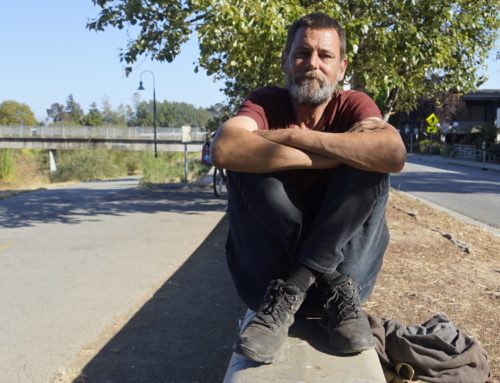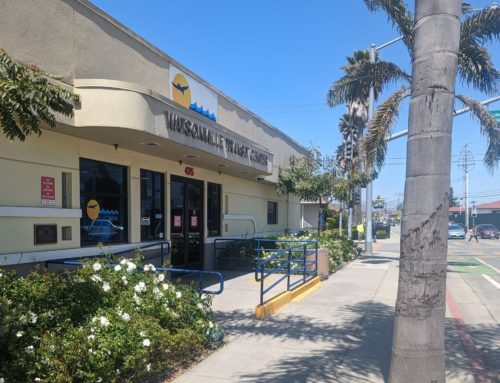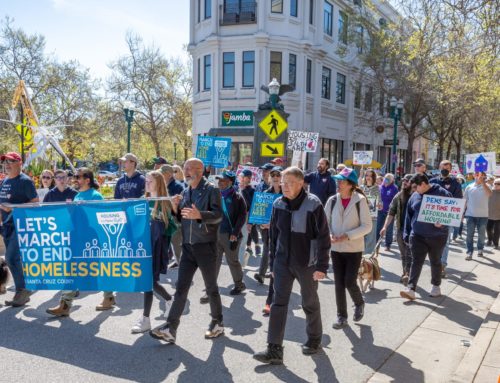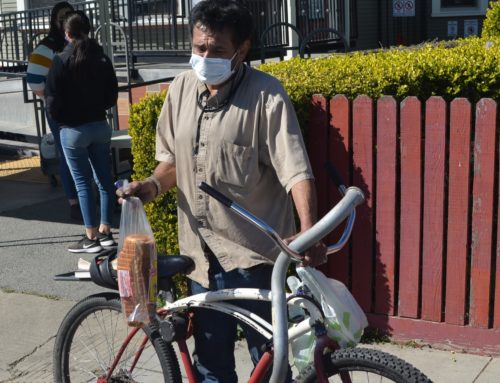Santa Cruz County on Monday recorded its largest single-day increase of confirmed COVID-19 cases. Local health leaders say the uptick is worrisome but expected, as businesses reopen. We hear advice from infectious disease expert and UC Santa Cruz professor Marm Kilpatrick on small ways people can be safer as they venture out.
And we share what we know so far about the recent uptick, how the virus moves, and the county’s shortcomings with contact tracing.
Transcript below.
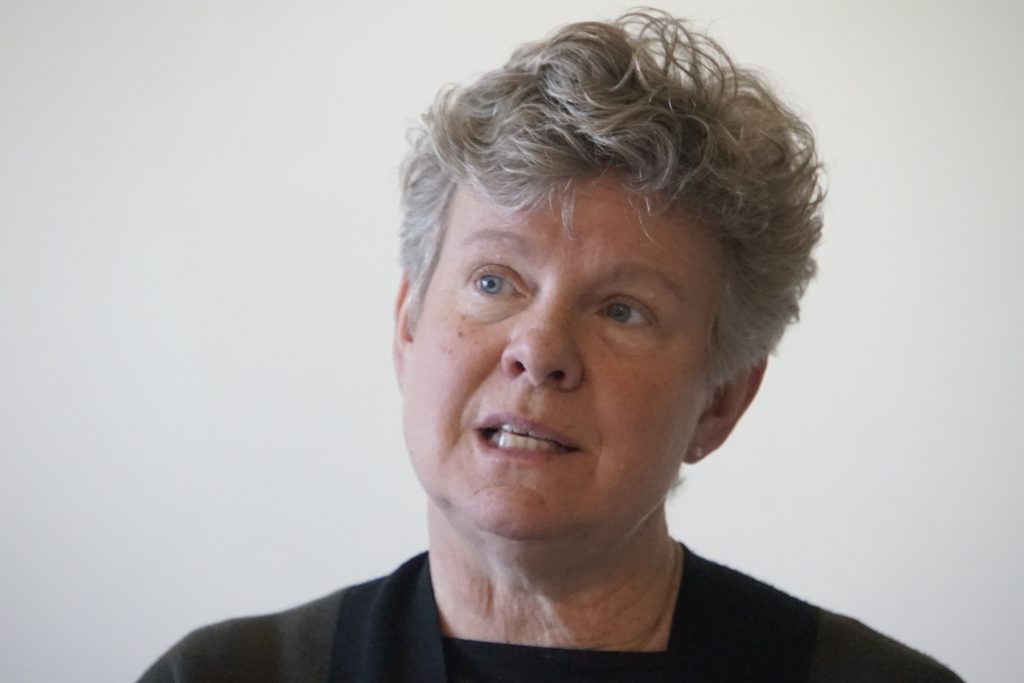
Santa Cruz Local usually only offers its podcast transcripts to paying members. But we offer our coronavirus-related transcripts free as a public service. We want everyone to be informed about the virus.
Santa Cruz Local depends on memberships from people like you to make sure vital information can be available to all. Can we count on your help?
TRANSCRIPT
[THEME MUSIC]
Kara Meyberg Guzman: I’m Kara Meyberg Guzman. This is Santa Cruz Local.
[MUSIC FADE OUT]
KMG: On Monday, Santa Cruz County had 21 new confirmed cases of the coronavirus. That’s by far the county’s largest single-day increase. Wednesday, the county had nine people in hospitals who were COVID positive or suspected of having it.
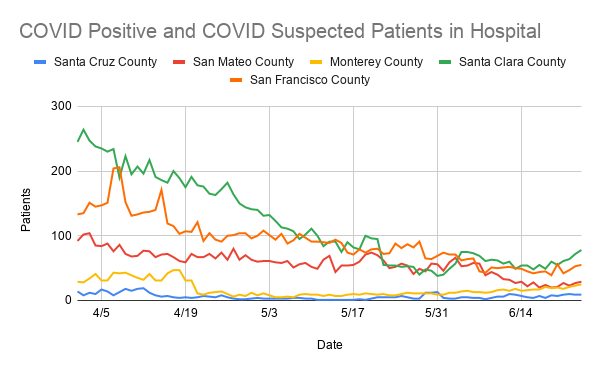
Our county health official told me that uptick is worrisome, but expected, as businesses reopen. She said that despite the uptick, she doesn’t expect to tighten the county’s rules any stricter than the state’s. She said she doesn’t think that stricter mandates would be effective.
More than three months into the shelter in place, people are tired of it. They’re going to interact with their friends and family, whether it’s allowed or not. Today we’ll hear about how you can be with others in safer ways. We’ll hear from UC Santa Cruz professor Marm Kilpatrick. He studies infectious diseases. He has some advice.
MARM KILPATRICK: The challenge I think that is tough for many people, especially, I mean, all of us that have been stuck at home, you know, with a stay-at-home order for several months now, is to realize that the opening of businesses doesn’t mean we can go back to all of our normal habits of having, you know, other households come over to our house and have a meal or something like that, or have a party, especially an indoor party where people are getting together without masks and interacting in relatively close ways and having conversations kind of face to face from just a foot or two apart, those kinds of things.
I think the mental signaling that we’ve had in our brains that business reopening equals normal life has created the situation where it seems like there’s been a bunch of additional gatherings, social gatherings of people, either parties at people’s houses, or various places, or even just getting together with someone from outside your household at a business. So either going to food at a restaurant or to a bar or things like that, that have reopened recently. That’s obviously those kinds of close contacts, we know are the really the fundamental way that this virus spreads between people.
At the same time, one of the great things is that the science over the past three months has really told us that we now know things that are really risky and things that are not so risky. You have to say it carefully, but, but it’s actually OK and possible to have interactions with people outside of your household. We just have to do them in slightly different ways than we’ve done before.
So if you haven’t seen a friend in three months, and you really want to see them, go for a walk together. Go for a walk outside where you can have a couple feet between you. If you want to sit down on a bench somewhere, give yourself a couple of feet of space between each other, if you can wear masks, especially if you’re within you know 5 or 6 feet of either other people, then you can actually have those interactions and see friends and see family members that you haven’t seen, and that can still be relatively safe.
We can’t eliminate risk 100% if you’re going to be, you know, relatively near another person, but it can be really, really low by taking relatively minor steps to really make that interaction safe.
KMG: What does the science say about, like, the different gradations of risk? Like, what’s the riskiest thing we could possibly be doing right now?
MARM KILPATRICK: Yeah, the riskiest thing is to get together in an enclosed space with someone with no masks and talk to them for more than 10 minutes. So you know, half an hour, an hour, you know, that kind of a thing is certainly the highest risk we can possibly do, especially if obviously, the person is infected, then that’s where transmission occurs, and obviously unmasked.
So if we have to be, let’s say, an enclosed space with someone else, let’s say we have to either be in a room with someone else, let’s say we have to be in a car with someone else, there’s no way to avoid that, then we can actually take a couple things to make a couple steps to make that safer.
So for example, in a car, we can have windows down. That increases ventilation. We know that that is quite helpful. We obviously can wear masks. We know that that’s actually quite helpful as well.
So if I had to be in a car with someone that was in my not my household, I would roll down the windows, I would, even if I could, it’s a little bit strange, but I would probably, if they could be the driver could be on one side, it would probably be on the other side of the car.
KMG: You mean like have the passenger in the back and then the driver in the front?
MARM KILPATRICK: Exactly. And I would be on the opposite side of the driver’s wheel in the back just to give as much space as possible. And if the windows are open, that’s going to really reduce the chance that any droplets that are leaving that person’s mouth, go back and get into my respiratory system. So that would help in a car.
The same kind of thing in a building. If I had to be in a building with someone else in the same room for a while, I would try to give them as much room, space as I could just distance between either desks or wherever we’re sitting. And then I would obviously wear a mask and ask them to wear a mask as well. And those are also going to greatly reduce the chance of transmission between people.
Again, if I could open a window, somehow have a little bit of ventilation, that’s also gonna help quite a bit.
So those are all steps people can take.
If you can have outdoor interactions, that’s vastly more safe than indoor interactions. So again, if people want to have get together with a friend, please just go for a walk.
They’re relatively small changes to make in our interactions to make them enormously safer.
KMG: I’m curious since you are an expert in infectious disease. You have a greater understanding of the risks than say, the average Joe. I wonder what you’ve done personally. Like, are you yourself going to restaurants, dining in? Yeah, like how much have you sort of relaxed your own sort of isolation in recent weeks?
MARM KILPATRICK: Sure. Yeah.
I am actually relatively comfortable going to a restaurant if I could sit outside. I think if there’s a restaurant that had indoor seating, but there were space between the tables, I would entertain that possibility as well. But I definitely am quite comfortable sitting outside with a space between the tables. And then if the server is or waiter or waitress is wearing a mask as well, all these kind of things that we know now substantially reduce transmission. If we can have those good safe interactions, then I’m trying to support all the businesses that are doing that well.
KMG: Is there anything else you’d like our listeners to know?
MARM KILPATRICK: I think in the past, the main message was that we didn’t have enough testing capacity. So if you have mild symptoms, just stay home and take care of yourself. And now the message is that we have capacity to test you. If you have symptoms at all, the first day that you do, please come forward, and that will protect your family members and your close ones that you’re gonna have contact with and cut off those chains of transmission.
It’s really one of our most effective tools, besides the personal behavior we just talked about, is finding out quickly, not just finding out that you’re infected, but finding out quickly that you’re infected. And that means going to the doctor to get tested at the first real indication of symptoms. So, the first day of symptoms, not the fourth or fifth day or when things get serious, you can’t have difficulty breathing or something like that. That’s a bit too late.
So it really matters for us to try to get tested as soon as possible after our first symptoms, and even our mild symptoms.
[MUSIC ]
KMG: As the number of COVID cases grow, we’re learning that they’re concentrated in South County and among Latinos.
Watsonville residents and Latinos have been disproportionately affected. Although Watsonville residents account for about 20 percent of the county’s population, residents there make up about 50 percent of the county’s COVID cases.
As of Thursday, the county had 337 cumulative cases. And more than half of those known cases have been among Latinos. About a third of the county’s residents are Latino. Also, cases have increased among people ages 18 to 34.
County Health Officer Dr. Gail Newel spoke about the increase of cases at a news conference Thursday.
GAIL NEWEL: What we continue to see to date, in our own county, is family gatherings still seems to be the greatest cause of these, the clusters that we’re seeing in most of our new cases. So we went from the Mother’s Day gatherings that were the initial clusters to Memorial Day and graduation. So I don’t think we’ve yet seen the impact from the protests and the memorials and vigils.
KMG: Newel said the uptick in cases is not related to increased testing. Despite more tests, the rate of positive tests has stayed low.
In the past 14 days, the county has had 85 new confirmed cases.
That number fails a state criteria. That helps trigger more shelter orders. It’s one of 14 criteria the county monitors to determine whether to increase restrictions on activities and businesses.
Contact tracing is another area where the county has fallen short. Contact tracers interview COVID patients and figure out who they might have infected.
GAIL NEWEL: We are not keeping up with our goal of being able to contact every positive case within 24 hours or do close contact investigation within 48 hours.
KMG: About a week ago, the county had 40 active COVID cases. As of Thursday, it’s 106. That’s more than the county’s contact tracers can handle.
So, people recently infected with the virus may not get immediate warning. That gives the virus a greater chance of spreading.
Santa Cruz County’s chief of public health told me that the limiting factor is training. The state has a new system and they haven’t been able to get the team up to speed.
One more thing about contact tracers. Health leaders say that if you get a call from someone and the caller ID says COVID CA, please pick up. That’s a contact tracer trying to reach you.
I asked Newel what she wants people to know.
GAIL NEWEL: There are five really important steps that they can take to save their own lives and to save the lives of other community residents.
Frequent hand washing. Stay home when you’re sick, stay 6 feet apart from others who are not in your household unit. Wear your face coverings whenever you’re within 6 feet of someone not in your household unit. And cover your coughs and sneezes. Those are the five key elements.
And then in addition, I really encourage people over the age of 65, and those who have medical or other conditions that make them especially vulnerable to COVID that they should stay home as much as possible.
KMG: Someone wrote to us asking about the 20-second hand washing. Does that mean you lather for 20 seconds or rinse for 20 seconds?
NEWEL: It means you lather for 20 seconds. Between the fingers is an area that’s often forgotten. So I know when I did my hand washing exercise where you can stick your hand in a black light afterwards to see where you know you didn’t get clean. I was shocked to see between my fingers and how I missed that. So I think that’s a part we often all miss.
[MUSIC]
KMG: To read and share a transcript of this episode, visit santacruzlocal dot org.
Thank you to all our 450 Santa Cruz Local members! Thank you especially to our guardian level members: Chris Neklason, Patrick Reilly, Elizabeth and David Doolin, Elena Cohen and Steve Ritz and the Kelley Family.
We invite you to join our Santa Cruz Local member community. Member support allows our work to be free for all. Signup is at santacruzlocal DOT org SLASH membership.
We also invite you to subscribe to our free email newsletter. We’re in your inbox two to three times a week. Sign up link is in our show notes.
Lastly. We are accepting applications for Santa Cruz Local’s Business Advisory Circle. If you have talent and experience in business development or marketing, please apply. We’ll meet three times this year. The application link is in our show notes.
Thanks to Trimpot for the music.
I’m Kara Meyberg Guzman. Thanks for listening to Santa Cruz Local.
Advertisement: This episode was sponsored by Santa Cruz Works, your connection to our area’s thriving tech and business community. With over 5,000 members Santa Cruz works gives you access the largest monthly tech events. Solutions for your startups and businesses. Connections to the hottest jobs and the latest news about local companies, their stories and best practices. Subscribe free to the Santa Cruz Works weekly newsletter today. SantaCruzWorks.org/podcast.
Kara Meyberg Guzman is the CEO and co-founder of Santa Cruz Local. Prior to Santa Cruz Local, she served as the Santa Cruz Sentinel’s managing editor. She has a biology degree from Stanford University and lives in Santa Cruz.


